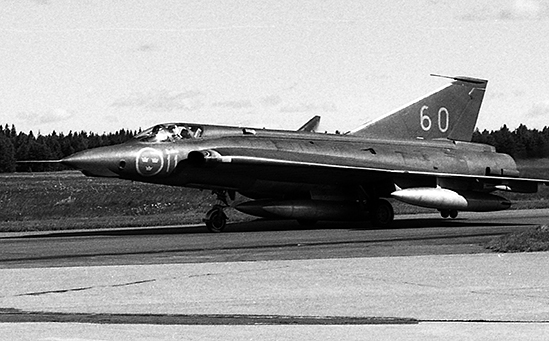Just nu pågår förberedelserna för att Felix Baumgartner ska bli den första människan att passera ljudvallen utan flygplan, se live sändning här.
Många kan tycka att det här är vansinne, men var vore den tekniska utvecklingen utan personer som tog risker? Chuck Yeager tog stora risker i sin Bell X-1. Han passerade ljudvallen och blev en helamerikansk hjälte. Idag är det ingen som tycker att det är särskilt märkvärdigt, men 1947 var det många som trodde att ljudvallen var fysiskt omöjlig att besegra.
För den som funderar över vad det är som driver människor att göra det omöjliga så kan jag rekommendera boken "Into the Wild" av Jon Krakauer. Boken är uppbyggd kring två historier. Den ena följer Christopher Johnson McCandless fram till hans död i Alaskas vildmark. Han är mest ihågkommen som en förlorare som inte begrep sitt eget bästa. Den andra följer författaren själv, när han som förste person besegrade Devils Thumb, en lodrätt klippa strax utanför Alaskas kust. Jon Krakauer lyckades och blev världsberömd över en natt. Hade han fallit ner och avlidit så hade han också varit en dåre på samma sätt som Christopher McCandless.
Felix föregångare och nuvarande rekordinnehavare Joseph Kittinger är med och förbereder Felix inför sitt hopp. Han om någon borde veta svårigheterna med ett liknande hopp.
The first test, Excelsior I, was made on November 16, 1959. Kittinger ascended in the gondola and jumped from an altitude of 76,400 feet (23,287 m) .[1] In this first test, the stabilizer parachute was deployed too soon, catching Kittinger around the neck and causing him to spin at 120 revolutions per minute. This caused Kittinger to lose consciousness, but his life was saved by his main parachute which opened automatically at a height of 10,000 feet (3,048 m).
Despite this near-disaster on the first test, Kittinger went ahead with another test only three weeks later. The second test, Excelsior II, was made on December 11, 1959. This time, Kittinger jumped from an altitude of 74,700 feet (22,769 m) and descended in free-fall for 55,000 feet (16,764 m) before opening his main parachute.[1]
The third and final test, Excelsior III, was made on August 16, 1960. During the ascent, the pressure seal in Kittinger's right glove failed, and he began to experience severe pain in his right hand from the exposure of his hand to the extreme low pressure. (See Effects of vacuum on humans.) He decided not to inform the ground crew about this, in case they should decide to abort the test. Despite temporarily losing the use of his right hand, he continued with the ascent, climbing to an altitude of 102,800 feet (31,333 m).[2] The ascent took one hour and 31 minutes and broke the previous manned balloon altitude record of 101,516 feet (30,942 m), which was set by Major David Simons as part of Project Manhigh in 1957. Kittinger stayed at peak altitude for 12 minutes, waiting for the balloon to drift over the landing target area. He then stepped out of the gondola to begin his descent.
The small stabilizer parachute deployed successfully and Kittinger fell for 4 minutes and 36 seconds,[2] setting a long-standing world record for the longest free-fall. At an altitude of 17,500 feet (5,334 m), Kittinger opened his main parachute and landed safely in the New Mexico desert. The whole descent took 13 minutes and 45 seconds and set the current world record for the highest parachute jump.[3] During the descent, Kittinger experienced temperatures as low as −94 °F (−70 °C). In the free-fall stage, he reached a top speed of 614 miles per hour (988 km/h).
Idiot eller inte? Misslyckas han så kommer många att kalla Felix för idiot. Lyckas han kommer att han bli hjälte.
Uppdaterad 12-10-14, 20:13
Felix tog tre av fyra rekord.
- Högsta höjd för bemannad ballong uppstigning.
- Högsta höjd för fallskärmshopp.
- Högsta hastighet i fritt fall. Oklar om han kom igenom ljudvallen.
Dock så missade han längsta fritt fall. Kittinger behåller det rekordet ett tag till!
Uppdaterad 12-10-14, 22:38
Nu har man räknat de officiella siffrorna och det blev Mach 1,24!
På livesändningen var det svårt att höra vad Felix sade, men på presskonferensen fick man reda på vad han sade när han hade benen utanför kapseln och snart skulle hoppa.
"I know that the whole world are watching and I wish they could see what I see. Sometime you need to go up very high to realise how small you are."
Kanske inte i klass med Armstrongs ord när han klev ut på månen, men väl värda att fundera en smula på.
Kittingers slutfras håller dock hög klass, "I would like to give a special one-finger salute to all of those who said he would come apart when he went supersonic". Nu är det bevisat. Människokroppen tål överljud! Olyckskorparna kan börja cirkla kring något annat.
AB, SvD, DN, Exp
USMC CH-53K Transports F-35C And Refuels From KC-130 En Route
18 timmar sedan



















Inga kommentarer:
Skicka en kommentar